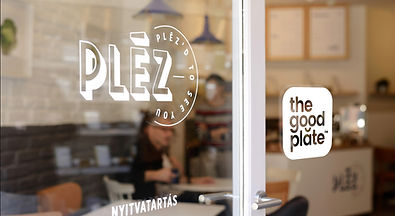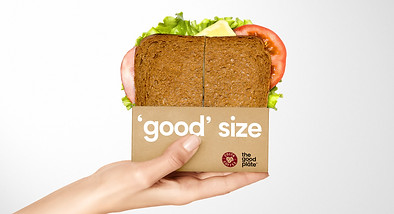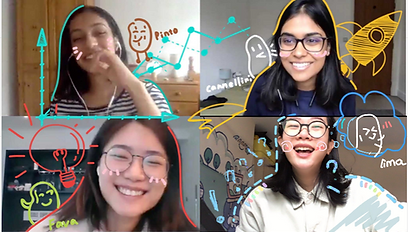
Driving behaviour change to combat the effects of meat intake on the climate
The Good Plate
Overview
Duration: 6 weeks
Description: Group project with MA Service Design Students
Stakeholders: This project involved primary research with users (meat eaters) between the ages of 18-40 in the UK.
Summary
The Good Plate was the service outcome of a project addressing one of the major factors behind climate change - meat consumption. Meat consumption by the world’s population is causing our planet to deteriorate day by day. However people’s associations with food are deeply rooted in culture and health, to get everyone to stop eating meat completely is close to impossible. We were thus presented with a unique challenge.
The Good Plate answers this challenge by bringing in a movement that aims to reduce the proportion of meat in a meal by increasing the amount of vegetables - promoting the idea of good health and a good planet. It is delivered by working with restaurants and other food services, customising items on their menus to include a more sustainable offering that helps combat climate change.
Methods Used
Desk Research
User Surveys,
User Interviews,
Ethnographic Research,
Persona Development,
Prototyping,
User Testing.
Project Video
Problem
Space
which is also the amount produced by our worlds' transport systems. Moreover, methane emissions from cattle are 25 times more potent than carbon dioxide.
Global greenhouse gas emissions for livestock farming constitute about 14% of total emissions
Research
Process
Understanding the Consumer - The Meat Eaters
To understand the factors influencing people’s buying preferences, we surveyed 40 people. The results were very interesting:
-
27% of the meat-eaters ate meat daily
-
Taste, followed by price, and health play a huge role in people’s decision making.
-
Sustainability consistently ranked lowest in factors influencing people’s food purchases
-
Most people were willing to change towards sustainable alternatives if all the factors of taste, price and nutrition were satisfied for them.
-
However, no one was ready to give up meat entirely or switch to plant-based meat alternatives.
Image 1 : Factors influencing people's food purchases.

Appetite for Change
Further, when researching potential behaviour change to adapt to a sustainable diet, people were found to fall into the below categories -
Image 2 : Appetite for change to healthy diets (IGD, 2020)

Hence, the appetite for change for was significant (66%). It was evident that to drive behaviour change, we had to focus on this section of the population. However, we had to keep in mind that behaviour change was not going to happen in a day, and hence we phrased our hypothesis as -
Hypothesis
How might we motivate people to take
small steps to reduce their meat intake?
Ideation
We thought about various aspects of people’s behaviours that we can leverage, brainstormed ideas and tested what might be the best method for behaviour change -
-
What if we rewarded people to make sustainable food choices?
-
What if we used ‘health’ as a hook?
-
What if we made carbon information transparent?

Image 3
Concept
Creation

Image 4: User Experiment
An experiment was conducted where our users were asked to choose between two options of plates - one with only a portion of steak and the other one with a smaller piece of steak served with a side of veggies.
9 out of 10 meat-eaters that participated in that experiment said they would choose the plate with the lesser portion of meat.
This was our moment of breakthrough that gave birth to the service concept.
Outcome

Image 5 : The Good Plate
The Good Plate is a movement aimed at reducing the consumption of meat and increasing the consumption of veggies for good health and a good planet.
What does it mean?
To put it in simple terms, The Good Plate is a ‘good version’ of your favourite meat meal with a side of health that’s lighter on the pocket. For our target consumer, the meat-eater that is willing to change, it is a gentle nudge at the right time when they are ordering food at a restaurant. The aim of the movement is to not only help people reduce their carbon emissions through food but also start a healthy conversation about the issue.
How does it work?
The goal is to work with restaurants to customise their menu, and introduce a more sustainable diet. Depending on the restaurant's operational model, different versions of the good plate can be adopted - The good size, The good day, the good delivery. The model can further be adapted to supermarkets to good versions of ready meals.
Image 6 : Adaptations of The Good Plate




What's in it for restaurants?
We envision it to be pioneered by restaurant chains that share similar values about sustainability. Moreover, it is an opportunity for them to introduce new ideas, cater to a price conscious consumer and potentially get certified as a ‘climate friendly’ food supplier, helping them save money in taxes to the government.
Testing
We tested this idea by asking people to select a lunch meal from 3 menus of a typical restaurant. To remove all bias, we asked them to pick from a variety of Beef, Chicken and Fish dishes and their ‘good plate’ alternatives which offered a veg side at a slightly lesser price.
Image 7 : Testing Menu

An overwhelming majority of people chose the good plate across all three menus, thus proving our hypothesis that people will make a small change if the right nudge is given at the right time.
Image 8 : Testing Results

Feedback
"I still get to eat what I like, but I like I helped, win-win!"
User - meat eater
"The idea is really good - It’s a great marketing opportunity and something like being certified to a movement like this could be an attractive option to restaurants that see sustainability as a part of their brand."
Front house staff - UK’s top 50 restaurants
Next Steps
-
Testing with sustainability officers of large restaurants chains in the UK will provide more perspective on iterations that might be needed to make it a truly viable concept for all the stakeholders involved.
-
Testing the price sensitivity of consumers for the good plate - Would they buy in to the concept if it was at the same price as their regular plate?


Learnings
The project reinforced the fact that a good service does not have to be complicated, but has to catch the user at the right place and at the right time.
As a new international student in the UK, the access to consumers was limited in terms of the demographics and the interviewees were roughly aged between 20-35. I acknowledge the limitations of the project in terms of access to consumers and am actively working to understand if the older population finds the concept of any value to them.
The moment I thrived in this project was conceptualisation and user testing. If given the opportunity to do things a bit differently, I would approach the user research again, and try to gather diverse perspectives right at the beginning, to remove all biases.